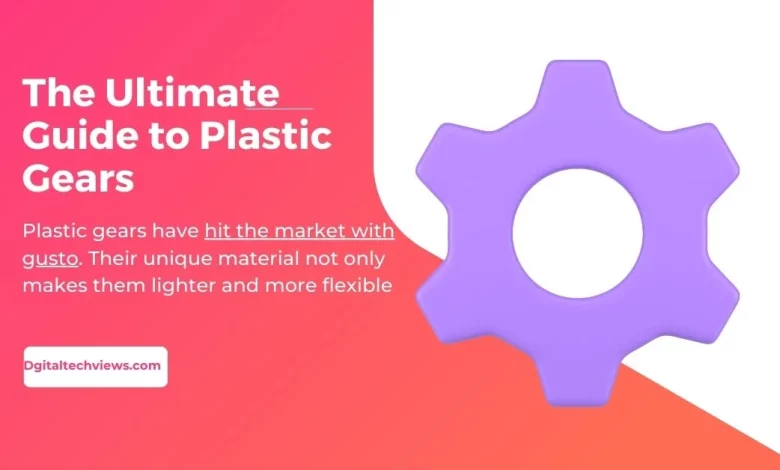The Ultimate Guide to Plastic Gears

The internet and our mobile phones have made it so easy for people to shop for what they want, and production has never been higher. In fact, it’s so high that your old machines might have trouble keeping up with the demand. You wonder how you’ll ever update your workflow and keep up with the times.
Well, the answer is a lot smaller than you think.
Plastic gears have hit the market with gusto. Their unique material not only makes them lighter and more flexible, but they can also handle many of the same loads as their metal counterparts. If you’re wondering if these new gears will fit your projects, you’ll want to keep reading.
What Are Plastic Gears?
As the demand for more delicate machinery grows, so too does the need for more adaptable parts. Metal gears dominate machinery, but some of their disadvantages are hard to overcome. In recent history, new gears using plastic materials have developed as an alternative.
These molded plastic gears offer incredible benefits. With the use of different polymers, they can fit just about any application. And as technology continues to advance, we’re seeing manufacturing techniques that make them almost as durable as metal.
The Advantages of Plastic Gears
Originally designed for lightweight applications, plastic gears offer a unique resistance to rust. This makes them ideal in many environments that metal gears aren’t. This isn’t their only benefit though; their function can vary depending on the material used.
Many types of gears have a self-lubricating feature. They are designed so they don’t require constant maintenance. This allows them to function more smoothly and with less mess.
Plastic gears are flexible and fit their space well, allowing them to resist typical types of damage. This helps them last much longer, meaning you won’t need to replace them as much. Some can even last as long as the life of the machine.
Polymers make excellent materials for industrial gears with weight requirements. Their lower density helps keep their inertia down and reduces the overall weight of the machine.
Important Considerations
While plastic gears offer several advantages in areas that metal gears usually struggle in, they do have their limitations. Science is helping close the gap between these two materials, but it is important to consider your needs in the meantime.
These new gears are great in industries needing small, flexible parts. However, they fail in environments with extreme aspects. Plastic gears start to fail when exposed to incredible amounts of weight, temperature, or speeds.
Another aspect to consider when looking at different types of gears is their manufacturing price. Because they’re relatively new, plastic gears cost much more to make. If you’re thinking about an investment in this advanced equipment, you’ll want to know how exposed they are to extreme elements.
More Helpful Industry Advice
That’s just a quick rundown on plastic gears and how you might use them. When applied in the right situation, they can save a lot of money on maintenance and materials. For more cost-efficient industry trends, you can read the articles in our Business section.




